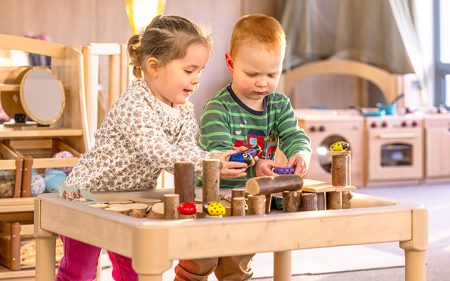Sensory play activities are hands-on experiences that engage a child’s senses—touch, sight, sound, smell, and taste—to help them explore and make sense of the world around them. These activities might include sensory toys playing with textured materials like sand, water, clay, or sensory bins, and even listening to calming music or exploring scented objects.
By incorporating sensory play into daily routines at home or in therapy, parents and educators can help children—especially those with sensory processing challenges—better understand themselves and their environment.
What Is Sensory Play?
Sensory play includes any activity that engages a child’s senses — touch, sight, hearing, taste, smell — as well as body awareness (proprioception) and balance (vestibular sense). It could be as simple as feeling the squish of play dough, listening to wind chimes, exploring the smell of herbs, or crawling through a tunnel.
While it often looks like free play, sensory play is deeply purposeful: it helps children build an understanding of their world through direct, hands-on experiences. This form of exploration supports not only creativity and curiosity but also helps children become more adaptable and resilient in new situations.

Why Is Sensory Play Important?
The benefits of sensory play extend far beyond just entertainment. Here’s why it matters so much for child development:
Brain development: Repeated sensory experiences strengthen neural pathways, boosting memory, attention, and learning capacity.
Language skills: As children describe textures, colors, sounds, and smells, they develop richer vocabularies and communication skills.
Motor skills: Activities like scooping rice, squeezing sponges, or walking on textured mats refine both fine and gross motor coordination.
Emotional regulation: Sensory play can be calming for children who feel overwhelmed, helping them self-soothe and manage anxiety.
Social growth: Group sensory activities encourage sharing, cooperation, and understanding of personal space.
Problem-solving: Experimenting with cause and effect (e.g., what happens if I pour water from a height?) builds critical thinking skills.
For children with learning disabilities or sensory processing disorders, sensory play isn’t optional — it becomes an essential therapeutic tool to help them interpret and respond to sensory input in everyday life.

When Can You Start Sensory Play?
You can introduce sensory play as early as the first months of life. Babies explore the world mainly through touch and sight, so offering soft fabrics, textured rattles, and contrasting visuals is a gentle start.
As children grow into toddlers and preschoolers, sensory play can become more active and varied — water tables, sensory bins, and climbing structures. For older children, sensory-rich crafts, cooking, gardening, or movement-based games help maintain and refine sensory integration.
Always keep activities age-appropriate and safe: avoid small parts for babies, supervise water play, and observe each child’s comfort level.
Benefits of Sensory Play for Children
Sensory play isn’t just about fun — it’s an important part of child development, especially for children who experience anxiety or have an anxiety care plan or anxiety NCP in place. Here are some of the key benefits:
1. Calms the nervous system
Activities like playing with kinetic sand, water, or soft fabrics provide calming, repetitive sensory input, which can help in reducing anxiety and emotional stress.
2. Builds focus and attention
By engaging multiple senses at once, sensory play helps strengthen neural connections in the brain — improving attention span and concentration over time.
3. Supports language development
Talking about textures, colors, and actions during sensory play encourages children to expand their vocabulary and express feelings they might otherwise keep inside.
4. Improves motor skills
Scooping, pouring, pinching, and rolling help develop fine motor skills and hand-eye coordination — important for writing, dressing, and daily tasks.
5. Encourages social skills
Playing together teaches turn-taking, sharing, and reading social cues, which are often included in an anxiety care plan for autistic children.
6. Helps process emotions
Sensory activities can act as an emotional outlet, helping children release frustration, anxiety, or sadness in a safe and healthy way.
7. Boosts creativity and curiosity
Open-ended sensory materials like play dough or colored rice invite exploration, experimentation, and imaginative play.
Including sensory play as part of a daily routine — or directly in a nursing care plan for anxiety — offers children a joyful, natural way to learn self-regulation and build emotional resilience.

What Sensory Play Activities Can Parents Do at Home?
Sensory play doesn’t need to be complicated or expensive. Some engaging, everyday ideas include:
Kitchen fun: Let kids stir batter, knead dough, or explore dry pasta. The smells, textures, and sounds all stimulate the senses.
DIY sensory bottles: Fill clear bottles with water, glitter, beads, or colored oil to create calming visual tools.
Texture hunts: Go on a “texture walk” around the house or garden — soft, rough, bumpy, cold, warm.
Sensory obstacle course: Use cushions, tunnels, and stepping stones to challenge balance and body awareness.
Frozen treasures: Freeze small toys in ice cubes and let children melt them using warm water or salt.
Nature sensory tray: Collect pebbles, leaves, and pinecones and let children sort, stack, or describe them.
The best activities are those that match your child’s interests and comfort, making learning feel natural and joyful.

How Therapy Helps Children with Sensory Difficulties
When children show strong sensory sensitivities, avoidance, or sensory-seeking behaviors that affect daily life, Occupational Therapy (OT) — especially Sensory Integration Therapy — is recommended.
Occupational therapists carefully assess each child’s sensory profile and design playful, structured activities (like swinging, brushing, jumping, or weighted play) that help children gradually tolerate and organize sensory input.
These therapies support:
Better focus in class
More confidence in social settings
Smoother transitions between activities
Reduced anxiety linked to sensory overload
OT doesn’t just happen in clinics — therapists often coach parents and teachers so strategies carry over to home and school.
Helping More Children Access Sensory Play
At Nurturers, we believe every child, regardless of ability, deserves to experience the joy and developmental benefits of sensory play.
We work closely with families, caregivers, and educators to:
Create sensory-friendly spaces at home and school
Design customized sensory diets (a daily plan of sensory activities)
Conduct workshops to help adults understand sensory processing
Offer therapy programs tailored to each child’s unique sensory needs
By sharing tools and knowledge, we empower families to make sensory play part of everyday life — not just a therapy session.

Conclusion
Sensory play isn’t just fun — it’s a foundation for healthy development. It helps children learn how to process and respond to the world, supports language, motor skills, emotional growth, and fosters creativity and resilience.
By starting early, using everyday materials, and seeking support when needed, parents and caregivers can unlock the power of sensory play for every child’s brighter, more confident future.
At Nurturers, we’re here to guide, support, and celebrate every child’s unique sensory journey — because every child deserves to discover the world in their own beautiful way.

